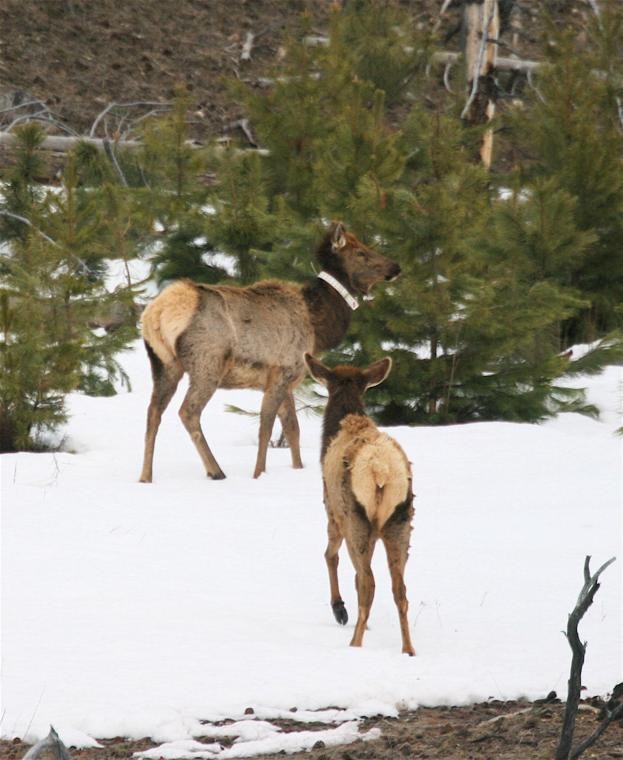Significant February snowstorms coupled with a cool, wet spring resulted in below-average survival rates for radio collared mule deer fawns, but it had less effect on collared elk calves, according to the final survival estimates for the 2018-19 winter.
Statewide, 42 percent of radio collared fawns survived through the winter. As wildlife managers expected, it was below the long-term average of 58 percent. For elk, 69 percent of radio collared calves were alive at the end of May. Idaho Fish and Game biologists monitored 209 mule deer fawns and 196 elk calves that were captured in early winter and fitted with telemetry collars.
How do the numbers compare to recent years?
Through May 31, 42 percent of the collared fawns and 69 percent of the calves were still alive. That compares with 57 percent of the fawns and 66 percent of the calves surviving through May in 2017-18, and 30 and 52 percent through May 2016-17, which was an unusually harsh winter.
Elk have not been trapped and collared for as many years as mule deer, and elk calves typically survive at a higher rate than mule deer fawns. Since researchers began collaring elk calves in 2014-15, survival has ranged between a low of about 52 percent in 2016-17 to a high of 84 percent in 2014-15. This year, 69 percent of collared elk calves survived the winter, which falls near the middle of that range.
Adult cow, doe survival high
Adult deer and elk typically survive at high rates unless it’s an extreme winter.
Of the 539 radio-collared mule deer does being monitored by Fish and Game researchers, 91 percent were alive through May 31, and 96 percent of the 578 collared cows survived.



